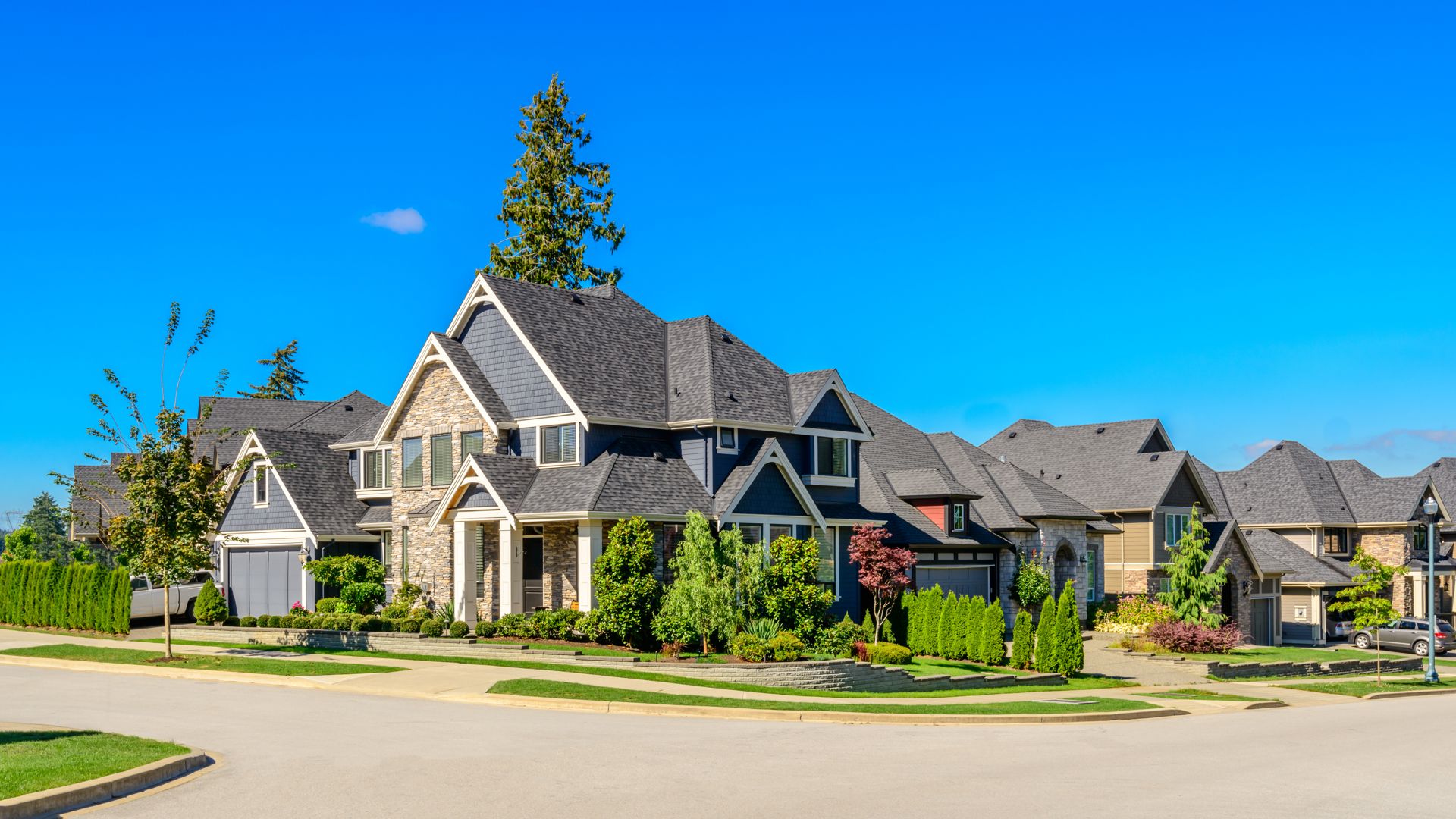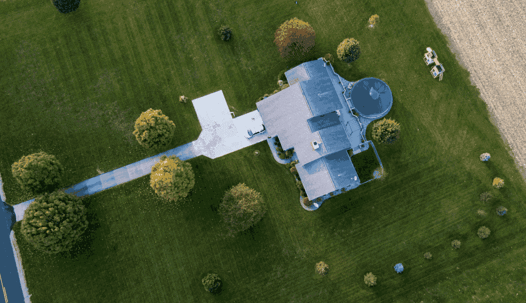A homeowner’s job is never entirely done! Our to-do list never seems to end, but maintaining our roof should be a priority. Your roof protects your home, your castle. You want to make sure the castle doesn’t leak, leaving you in a moat. The integrity of your roof is nuanced, meaning that there are several different factors you need to take into consideration when not only buying a home but what sort of roofing materials you use when you replace the roof on your home. The different roof types and roofing materials selected largely depend on the elements and the environment of your region. By the end of this guide, you should have a good, solid idea of what roof builds are right for your area and what roofing materials are best for your home.
The Different Types of Roof Builds
Whether you’re building a new home or retrofitting an older house, choosing the right type of roof build is probably one of the most important decisions you can make on a new build or a remodel. Your roof’s shape is essential for the overall outdoor aesthetic of your home, and that’s just scraping the surface. A roof can make your home more resilient and energy-efficient, and it can also provide additional living space.
Let’s talk about the most popular roof types that we tend to see on homes:
Gable Roof
One of the most popular roof types in the US, gable roofs are also known as pitched or peaked roofs. Their triangle shape is a dead giveaway as they are genuinely part of classic American home design.
Easily shedding rain and snow is one of the many benefits that gable roofs have to offer. Their peaks provide more space in the attic, or you can opt for vaulted ceilings, providing more ventilation. Their same triangle build is typically cheaper than more complex designs and much easier to build.
However, if you opt for a gable roof build on your home, there are some concerns. Living in high wind areas can be problematic for this roof build. If the gable frames are not properly constructed and there’s a lack of proper support, the roof can be in danger of collapse. Too much of an overhang present hazards in high wind areas, a high risk of uplift exists and can detach a roof from the walls of your home.
Hip Roof
A hip roof is sloped on all four sides, providing more protection and stability in windy areas than the stereotypical gable roof. The sides are
all equal lengths and come together at the top to create a ridge. If you’re in a storm-prone or high wind area, using a roof pitch of 4/12-6/12 (18.5 to 26.5 degrees) is recommended.
The hip roof type provides the same general aesthetic and benefit as a gable roof, but affords the home more protection in wind or hurricane weather. This roof type is excellent in snowy areas as well, as the snow melts off easily and water doesn’t pool.
However, hip roofs are not without their drawbacks. They’re more costly to construct than the gable roof. It’s a more complicated roof design and requires more materials during construction. If you decide to add a dormer, it can be potentially problematic as well. Dormers equal more seams, and more seams mean that you have more opportunities for water to find its way in, especially if a roof is not installed correctly.
Mansard Roof
Mansard roofs (or french roofs, if you so desire) are four-sided roofs that have a double slope on each side that form a low pitched, sloping roof when they meet. This roof includes a lower slope that is much steeper than the upper, creating a unique addition to your living space. The sides of Mansard roofs can either be flat or sloped, depending on the style.
Mansard roofs are perfect in situations where you want to add to the home down the road. They create a great deal of extra living space, allowing people extra attic space or even more living quarters (called garrets).
However, the low-pitched portion of a Mansard roof isn’t ideal for snowy conditions. Sorry, Denver. They are also more costly than other more ‘traditional’ designs because of how embellished and detailed they are.
Gambrel Roof
Better known as a barn roof, the Gambrel roof build has similarities to the Mansard in the sense that it has two different slopes. It differs from the Mansard as the roof only has two sides in this type, whereas the Mansard has four.
Also similar to the mansard, the gambrel has a steep, almost vertical slope with an upper slope that is pitched much lower. These aren’t just for barns and can also be seen on farmhouses, cabins, and even Dutch Colonial style homes.
Much like its brethren the mansard, the gambrel has the potential for extra living space in an attic, garret, or loft and is simple to frame.
This particular roof type uses just two roof beams joined with gusset joints. With such a simple construction, it cuts down on materials used and is a total cost saver during building.
Gambrel roofs are not suggested for areas prone to high winds or that experience a lot of snow during winter. The natural open design of a gambrel roof creates a risk of collapse under extreme weather conditions.
If you opt for a gambrel roof build, take extra care to ensure that your roof is constructed correctly. This includes waterproofing at the ridges and regular maintenance. It’s advised to have gambrel roofs checked every year for damage from heavy rain, wind, or snow.
The Different Types of Shingles
Now that you’ve decided on your roof design, it’s important to discuss the different types of roofing materials that will protect your home from the elements. There are many different kinds of roofing shingles and each types has its benefits and unique characteristics.
Asphalt Shingles
Asphalt shingles are easily the most popular and affordable roofing material in the United States. One of the most significant drawbacks of asphalt shingles is that they don’t fare well in areas that experience severe temperature fluctuations. This increases the likelihood that shingles may crack in these areas. In temperate climates, they still run the risk of cracking because they are made from moderately strong materials. Asphalt shingles can only be used on roof types that have steep slopes; they are not suitable for flat roof types.
To repair torn asphalt shingles, you must first lift up the shingle and add roofing cement underneath it and then on top. For curled edges, a roofing nail will do the trick. Columbine Roofing in Denver can help you manage more complex repairs to your asphalt shingle roof.
Tile Shingles
If you’re looking for style, you’ve found it. Tile shingles are often seen in Spanish or Mediterranean style homes and can come in a variety of shapes. They’re typically fired in lighter colors, which keeps the home cooler. While visually appealing and enduring (some can last 80 years or more), the type of materials tile shingles are made out of are expensive, and the roof cost is not for the faint of heart.
As this roof is expensive, it can also be dangerous. It may be too heavy for your roof, and it’s essential to get a licensed roofing contractor to evaluate the structural integrity/safety of your home before installing a tile shingle roof.
Repairing tile shingles is vital for maintaining the integrity of your roof. Common problems include cracks, leaks, holes, or broken tiles. To fix your roof, you can fill the small cracks or holes with plastic roofing cement or replace the affected tiles entirely.
Slate Shingles
Slate shingles are hardy and long-lasting. This roof type is known to last anywhere from 80-100 years, including some of the best water and damage resistance properties known to roofs. Slate shingles come in an array of colors and are ideal for frigid winter climates. However, don’t get too excited. Slate shingles are pricey to install, expensive to repair, and are quite heavy (so they may not even be suitable for your home).
Owning a slate roof is a commitment. Homeowners must regularly inspect flashing and shingles, as both may need replacing. Slate shingles are not for the DIY’er, as these shingles are likely too heavy without professional intervention.
You have some decisions to make when you are ready for a new roof. What you want to spend, where you live, and your level of commitment to repair and maintenance are all factors to take into consideration when you’re in the market for a new roof for your home. That being said, no matter what materials you choose, make sure that you select a reputable roofing contractor like Columbine Roofing when you replace or repair your roof. Don’t leave your roof open to damage from improper installation, call us today!
Questions About Roof Types and Shingle Varieties?
We always recommend talking to an expert about the different roof types and shingle options that work best for your home. When you consider style and energy-efficiency, roofing professionals can help homeowners make the best choice possible for our desired style and budget.

